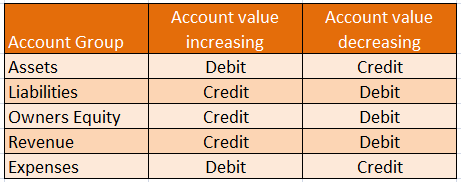Revenue AccountsRevenue accounts are those that report the business’s income and thus have credit balances. Revenue from sales, revenue from rental income, revenue from interest income, are it’s common examples. Total Expenses$1,000Income Summary (Revenue – Expenses)$4,000After the accounts are closed, the income summary is then transferred to the capital account of the owner and then closed. The content of the income statement are transferred to the income summary. The values are debited from their respective accounts and credited to the income summary. The income statement accounts provide valuable insight into your business performance and help you make informed decisions that could impact business growth. It includes material costs, direct labour, and overhead costs , and excludes operating costs such as selling, administrative, advertising or R&D, etc.
Retained earnings now reflect the appropriate amount of net income that was allocated to it. Closing entries are performed at the end of an accounting cycle and are a way to close out the balances of temporary accounts. The presentation of comprehensive income has become a standard feature in an income statement.
How to Prepare Income Summary?
Every time a business sells a product or performs a service, it obtains revenue. This contrasts with the balance sheet, which represents a single moment in time.
- They are housed on the balance sheet, a section of the financial statements that gives investors an indication of a company’s value, including its assets and liabilities.
- Bench assumes no liability for actions taken in reliance upon the information contained herein.
- Download our free course flowchart to determine which best aligns with your goals.
- They include the cost of goods sold ; selling, general, and administrative (SG&A) expenses; depreciation or amortization; and research and development (R&D) expenses.
- EPS is calculated by dividing the earnings after tax and preference share dividends by the company’s shares in issue.
- This is the income your business generates from business activities.
We also have an accompanying spreadsheet which shows you an example of each step. INVESTMENT BANKING RESOURCESLearn the foundation of Investment banking, financial modeling, valuations and more. StakeholdersA stakeholder in business refers to anyone, including a person, group, organization, government, or any other entity with a direct or indirect interest in its operations, actions, and outcomes.
Gross Profit
If the resulting balance in the income summary account is a debit balance, then the same amounts to a net loss, which is also transferred into the retained earnings account. Similarly, a net loss occurs when the debit side in the income summary account is higher than the credit side. The income summary account balance is then transferred to the retained earnings account in the case of a corporation or the capital account in the https://online-accounting.net/ case of a sole proprietorship. The end result is equally accurate, with temporary accounts closed to the retained earnings account for presentation in the company’s balance sheet. The four-step method described above works well because it provides a clear audit trail. For smaller businesses, it might make sense to bypass the income summary account and instead close temporary entries directly to the retained earnings account.
What are the four purposes of a income statement?
An income statement provides valuable insights into various aspects of a business. It includes readings on a company's operations, the efficiency of its management, the possible leaky areas that may be eroding profits, and whether the company is performing in line with industry peers.
It is easy to derive the cash profit by adding or deducting the accrual balances. Discontinued operations is the most common type of irregular items. Shifting business location, stopping production temporarily, or changes due to technological improvement do not qualify as discontinued operations. WSO provides its members with an Accounting Foundations course to master the necessary accounting skills. While this example highlights exactly what preparing the account looks like, there are times when companies never actually have to go through the process of producing it. While it has to be provided for in arriving at the profit after tax, what gets paid in the final outcome as tax can be higher or lower than the earlier amount provided. By benchmarking this expense category as a percentage of revenue, managerial efficiency is detected by a performance reviewer.
Income Summary
An income statement is one of the most common, and critical, of the financial statements you’re likely to encounter. An income statement describes how profitable your business is.

This is a time-consuming job and sometimes it is not possible to get data that far back for non-listed companies. Financial StatementsFinancial statements are written reports prepared by a company’s management to present the company’s financial affairs over a given period . Financial statements are written reports prepared by a company’s management to present the company’s Income Summary Account: Definition and Explanation financial affairs over a given period . It includes operating and non-operating revenue and expenses. Therefore, it does not give the correct financial picture of the organization. All Expense AccountsExpense accounting is the accounting of business costs incurred to generate revenue. Accounting is done against the vouchers created at the time the expenses are incurred.
The income summary account resets at the beginning of every accounting period, whereas the purpose of the income statement is to show the financial performance during the period. The closing entries are also recorded so that the company’s retained earnings account shows any actual increase in revenues from the prior year and also shows any decreases from dividendpayments and expenses. The balance sheet’s assets, liabilities, and owner’s equity accounts, however, are not closed.
How do you record income summary?
The income summary entries are the total expenses and total income from your company's income statement. To calculate the income summary, simply add them together. Then, you transfer the total to the balance sheet and close the account.
